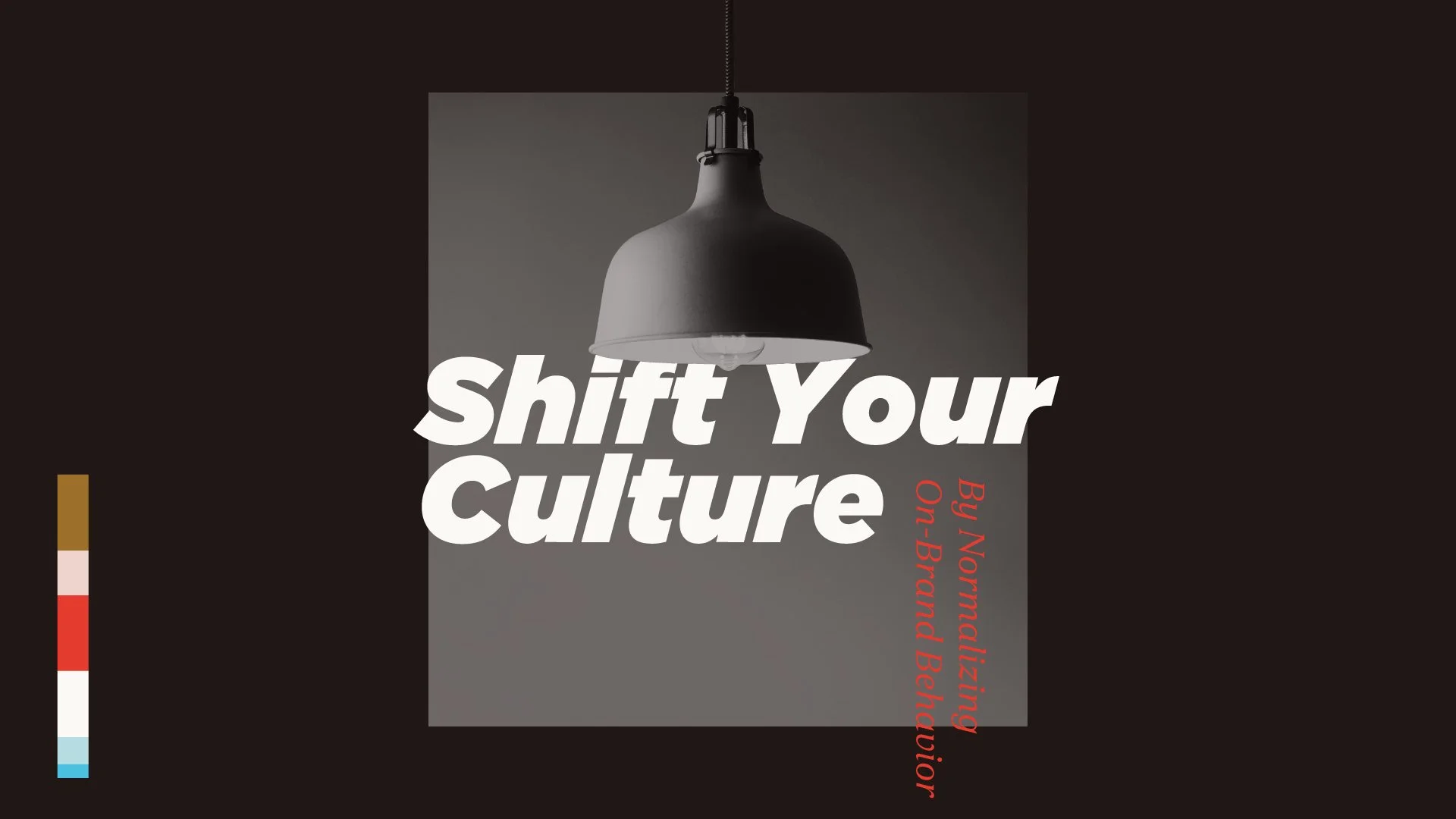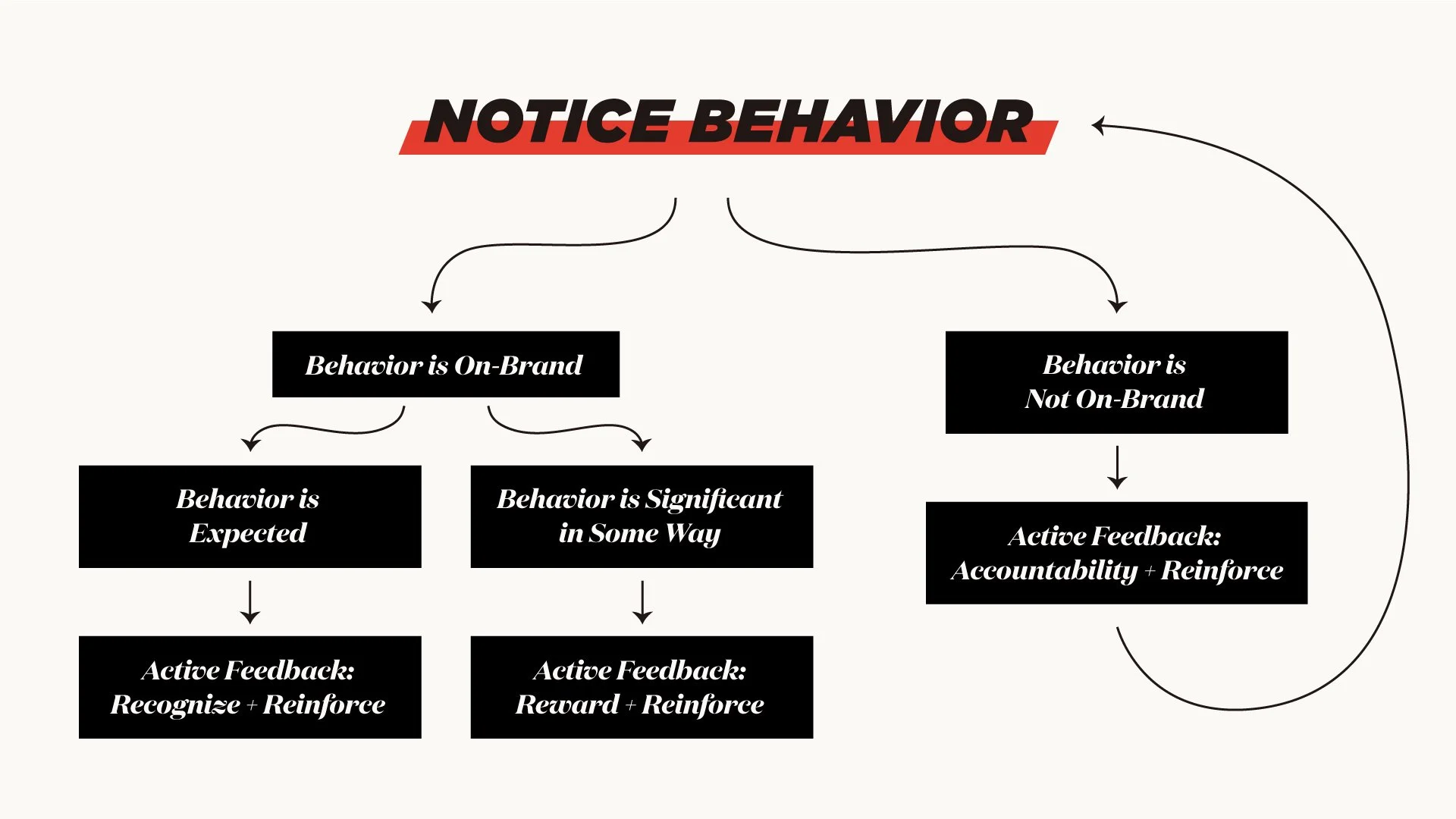Shift Your Culture By Normalizing On-Brand Behavior
When we think about culture, we think about the ‘vibe’ of your company.
That ‘vibe’ is created by the behaviors that your team takes towards one another and themselves. Further, when we go a layer deeper and look at what drives those behaviors, we find values.
Shared values in an organization are important because they provide a map for how your team is expected to behave. As important as it is to name these values, it is just as important to define these values and show what behaviors support them. Through clear behavior expectations, employees begin to embody your values and clients feel them.
Step 1: Operationalize Values
Largely thanks to Brené Brown, our team was introduced to the concept of operationalized values. This simply means taking your values and outlining what they look like in action or what behaviors support them.
For example, Joy is one of our core values at Hoot. While it’s important to identify and define what Joy is at Hoot. It’s even more important to outline what Joy looks like in action. Below you can see how we operationalized this core value.
Behaviors that support Joy:
I bring the right energy into a room.
I take care of myself in order to manage my time and emotions to make this possible.
I leave the office, the people and my clients better than I found them.
Yet, we’ve learned that outlining these behaviors isn’t enough to shift our culture. While naming, defining, and operationalizing values are critical steps in culture development; without practicing accountability, your values will fail to have any real impact on your company.
That’s why purpose-driven brands go beyond naming, defining, and operationalizing values. They invite leaders to model on-brand behavior, and they invite all team members to consistently practice active feedback. Through modeling and active feedback, your culture begins to shift.
Below we cover the importance of active feedback and how it can be an effective tool in normalizing on-brand behavior. When we can harness the power of accountability, we can build cultures where people want to stay.
Step 2: Practice Active Feedback
Active feedback is the practice of noticing behavior and capitalizing on the opportunities to reinforce on-brand behavior and mitigate less desirable behavior.
The flow chart below highlights when recognition, reward, and accountability are useful tools to reinforce on-brand behaviors within your organization. Purpose-driven cultures invite all the members of your team to participate in active feedback. It’s most effective when it’s received top-down, down-up, and side-to-side.
When giving active feedback, it is important to focus on the behavior and not the person. By focusing on behaviors you not only avoid making things personal, but you also drastically increase the likelihood of seeing a change or continuation of a desired behavior.
Further, when you offer feedback that is not specific nor behavior-focused, employees are left uncertain about what behaviors they need to change or continue.
Below are examples of behavior-focused versus person-focused feedback.
Example 1: Behavior is on-brand.
Behavior-focused feedback: ‘When you owned your mistake and took swift action to correct it….’
Person-focused feedback: ‘You are amazing…’
Example 2: Behavior is not on-brand.
Behavior-focused feedback: ‘When you don’t participate in meetings….’
Person-focused feedback: ‘You are not engaged…’
When giving constructive feedback as a response to off-brand behavior, it’s important to check in with both yourself and the person you're delivering feedback to. Once you’ve asked to offer feedback and this ask has been accepted, we recommend the following formula:
Lead with empathy. Simply recognizing that someone is doing their best or has a lot on their plate can help disarm someone receiving feedback.
Be direct. It’s best to be clear and direct about what change you need from your employee, manager, or peer. Try not to beat around the bush or spit out a word salad.
State why it matters. Sharing the why is critical when offering feedback. This is where the conversation becomes a learning experience. Through understanding, employees are able to work towards real change.
Invite the team member into the conversation. Checking in and listening after you’ve shared your point of view brings a conversational element to the experience. Being able to collaboratively discuss the best ways to move forward can also bring you closer together vs diminish the relationship. This requires an openness from whoever is delivering feedback.
Offer support. Now that you’ve covered what you need, making sure you’re clear on what your team member needs is the last key step.
When active feedback is normalized and accountability is seen as a positive tool, everyone in your organization has the opportunity to get better. And when your people get better, real change occurs.
Through active feedback, we build and maintain cultures that are authentic to what your organization values most — cultures that make people want to stay.


